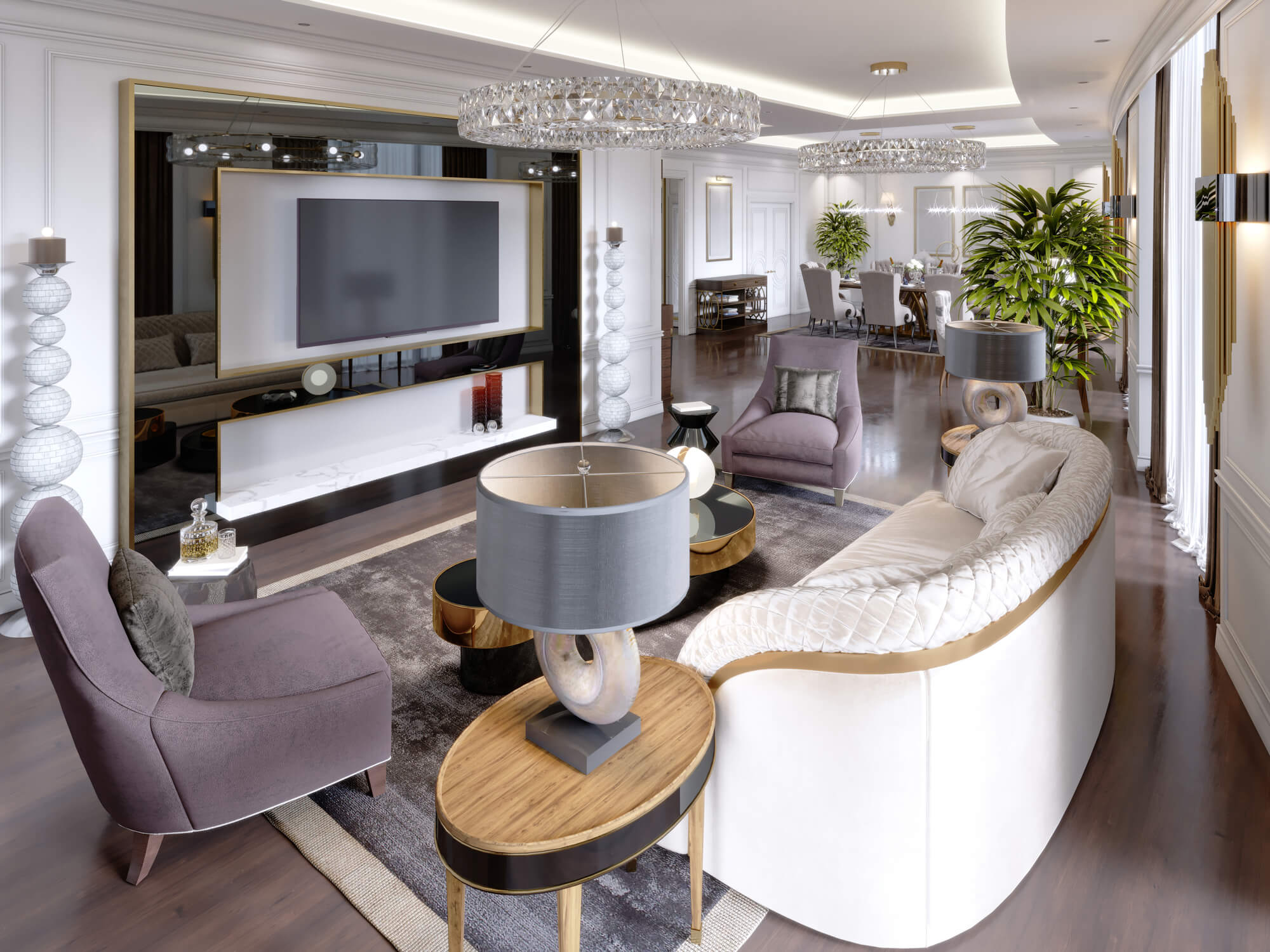



Take a look at six key tenants of great home design, so you can decorate like a pro.
Lighting is a very important part of interior design and can beautifully transform any space. Consider pendant lights or chandeliers to enhance your lighting scheme and create focal points in your room. Design experts understand that evaluating the natural light and how it changes throughout the day is key to determining the type of window treatments, how many accent lamps, and overhead light fixtures are needed to create the desired look.
Interior designers know that flooring lays the foundation for any space and sets the stage for the overall room design. Consider area rugs to add texture and warmth, or wood flooring to create a classic, timeless look. Flooring instantly makes a space look smaller, larger, formal, cozy, laid back, or luxurious.
Color is an instrumental component of interior design. The color of a room will not only connect everything in the room together, but it will also affect how you feel. Rich, deep colors like red create energy and passion while light, neutral colors like cream create calm and relaxing feelings. Enhance the effect with glass wall art that complements your chosen color palette, adding both style and cohesion to the space.
One tenant of great interior design that is sometimes overlooked, but very important is mixing the old with the new. Combining pieces from different time periods or styles adds a personal flair and uniqueness to a home. It is important to blend the pieces together, so there is balance and harmony. Incorporate accent chests or antique-inspired furniture for an eclectic yet cohesive look.
Interior designers realize that original framed artwork adds interest to any room. One, large framed original piece hanging above a mantle's fireplace becomes a fabulous focal point. A grouping of smaller artwork and personal pictures displayed in an out-of-the-way corner or hallway becomes a charming art gallery. To complement your art collection, consider using wall mirrors to reflect light and make the space feel more open and vibrant.
Designers know that every square inch of the room should be appealing. This includes higher areas in the room. Hanging a large mirror higher than expected, displaying light fixtures that hang down from the ceiling, or arranging window treatments above the window will create a balanced space.
Check out our online catalog for more design ideas, so you can decorate like a pro.



